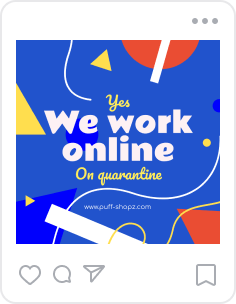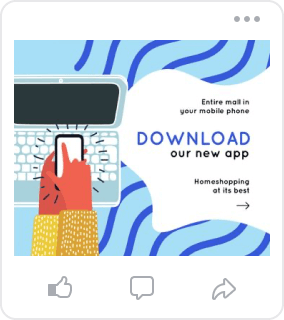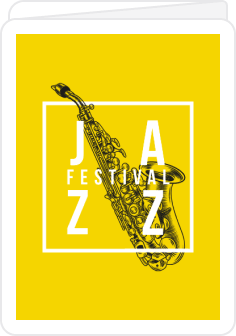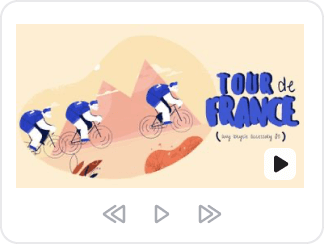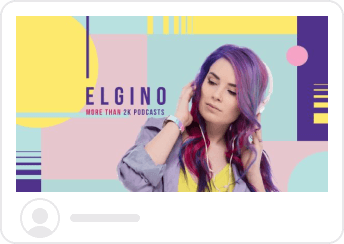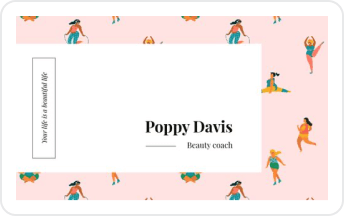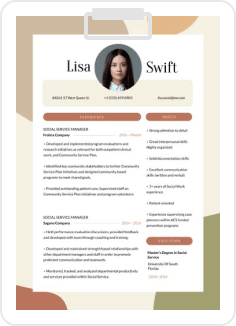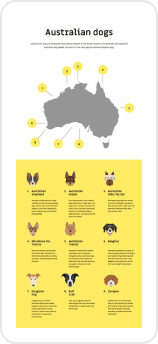The ins and outs of digital marketing
Let’s define the main term for starters. Digital marketing is a type of marketing that promotes services and goods on the internet at all stages of interaction with consumers.
The expansive capabilities of the digital world allow marketers to target consumers, improve their results, and cut costs.
Is Digital Marketing the Same As Inbound Marketing?
These two terms might seem similar, but there is a difference in their meaning. Marketing can be roughly divided into two types: inbound and outbound, which apply to both web and “offline” worlds. Let’s go to the definitions.
Inbound marketing is a method of attracting the audience’s attention to a product by raising interest and education without the use of intrusive advertising. Some examples of inbound marketing are:
- Blog articles
- Educative videos
- White papers
- Guides
- eBooks
Outbound marketing is a method to promote a product using direct advertising. In this type of marketing, the initiator of the purchase is the company, not the buyer. The company immediately offers to sell the product, sometimes without even waiting for a potential client to generate demand. Some examples of outbound marketing are:
- TV or radio ads
- Billboards
- Video ads
- Direct mailing
- Push messages
So, inbound marketing is just one aspect of the whole marketing field and is very popular in online marketing.
What Are the Main Methods of Digital Marketing?
There are dozens of different types of digital marketing activities, and here are the main ones that every marketer should be aware of:
1. Contextual advertising
Contextual ads are a very popular type of advertising in the format of text ads and banners. You can see them at the top of the Google search field (Google Ads), in your Facebook thread (Facebook PPC), and on many websites that display ads.
The ad’s audience is selected by an advertiser based on a variety of parameters, such as location, age, interests, and many others, which is called ad targeting. There are several ways to pay for a campaign in contextual advertising, such as pay-per-click, cost-per-action, and cost-per-click.
2. Email Marketing
Email marketing is one of the most popular marketing tools, which includes sending promotional, informational, and educative materials about products, services, and the brand itself through email. Email marketing plays a significant part in customers’ acquisition and retention.
3. Search Engine Optimization (SEO)
SEO is the process of improving the visibility of a company’s site to search engines. Successful SEO makes Google and other search engines rank your content higher than your competitors’ pages so that they appear in the top of the search results and gather more visits.
4. Social Media Marketing (SMM)
Social Media Marketing means advertising and promoting your products and services to customers using social media platforms, such as Facebook, Instagram, TikTok, or LinkedIn. This includes both direct ads and attracting readers to your page with valuable content.
5. Affiliate Marketing
Affiliate marketing is a way to promote a business through partners. This method has been popular offline for decades and has naturally come online. The principle is the same: people advertise your products or services using different types of ads to their own customer base and receive a commission from the sales.
6. Video Marketing
Video marketing promotes the products or services of a brand by using videos. It can be the creation of advertising, educational, or entertaining videos and promoting them online or placing ads into other people’s videos. However, creating custom-made videos can be expensive, so brands can use free stock videos that are relevant to their product.
7. Content Marketing
Content marketing involves publishing valuable content that attracts and engages the brand’s prospects. This includes different types of content: blog articles, images, videos, emails, and any other type of content you can think of. Comprehensive content marketing needs quite a lot of effort, but you can start by using blog post templates to create professional-quality content.
8. Influencer Marketing
Influencer marketing basically employs influencers with a huge social media following to promote and endorse products or services on their platforms, which may include different types of content, such as video reviews, blog articles, or Instagram posts. That’s how they “influence” their followers to take action.
What Are the Benefits of Digital Marketing?
Digital marketing is essential to a company’s growth today. Here’s how it can benefit your brand:
- It helps you reach more of your target audience via different digital media channels.
- It has a low entrance barrier, meaning that you can dive in with a solid strategy even with a smaller budget.
- It is usually cheaper than offline marketing as the cost per lead is lower.
- It allows you to improve your competition by easily monitoring your competitor’s campaigns compared to offline.
- It helps you set your targets more effectively based on a wide diversity of targeting tools.
- It aids in measuring campaign results with the help of analytics tools.
Conclusion
Digital marketing is a flexible, universal way for communicating with customers and promoting a company. It can help you reach out and tell millions of users about your products and raise the awareness of your brand. It is a great way to improve your general marketing strategy using different online methods of promotion.
Adding high-quality visual materials such as videos, blog post templates, and free stock photos from VistaCreate can help you increase your brand awareness and audience engagement, improve the design of your content, and cut costs at the same time, which will, as a result, help you better market your products.

